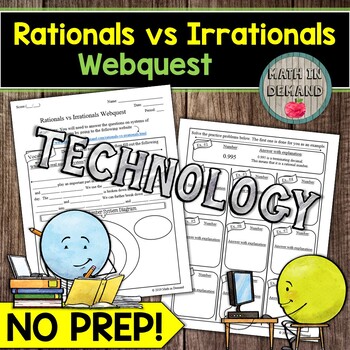The Real Number System Webquest Rationals vs Irrationals
Description
Students will need a device for my math webquest on the real number system. Students will be given a link that goes to my website containing information about the real number system, and the difference between rationals and irrationals. I have included a worksheet that aligns to the information on my website. All you need to do is print and go! In addition, there is a 10 problem quiz on my website. The quiz gives instant feedback as to whether the answer is correct or incorrect.
Webquests are great for sub days or any day! Students research and write down the information on their paper. Students are able to retain information better when they write it down!
Why are my webquests worth every penny?
1.) I not only create the pdf for the student template and answer key, but I create ALL of the information and videos on the website! It is my own personal website so I am in charge of all the information posted on my site!
2.) Webquests are a great way to introduce information to students! It has been stated many times that children learn the most when they write down information. My webquests will help students retain information, and provide them with plenty of examples!
3.) The webquests are excellent to use when you have a sub! All of the answers for the student templates can be easily found on my website!




